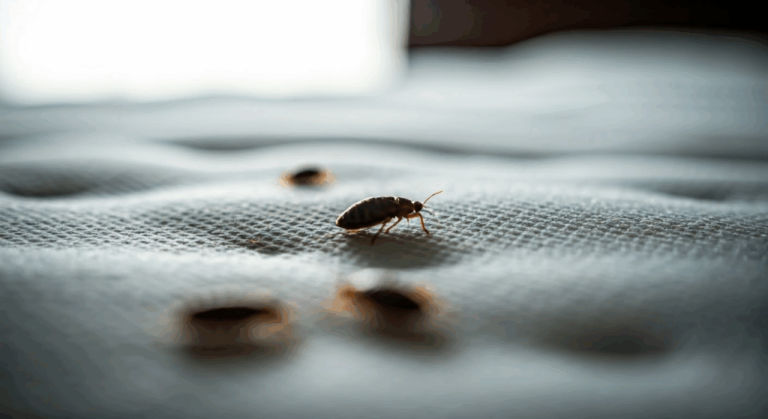Ever spent hours cleaning, spraying, and sealing up cracks—only to see bed bugs return? Cleveland is experiencing an uptick in reports of bed bug infestations in several neighborhoods, raising concerns about these difficult-to-get-rid-of parasites. As awareness spreads, many residents attempt to handle infestations themselves. The appeal is obvious—save money and regain control quickly. But what most people don’t realize is that DIY bed bug treatment rarely produces lasting results.
From misidentifying the problem to using ineffective products, these home remedies often backfire. Cleveland’s climate and housing types only worsen things, leading to frustration and recurring infestations. To understand why going it alone doesn’t work, consider the following:
Misidentifying the Problem Delays Effective Bed Bug Treatment
Acting quickly is crucial when dealing with bed bugs, but many DIYers don’t start on the right foot. Mistaking bed bug bites for something else can lead to significant delays. People often confuse these bites with mosquito or flea bites, especially during the warmer months.
This misidentification gives bed bugs more time to spread unchecked. Moreover, DIYers focus only on obvious areas like mattresses, ignoring critical hiding spots such as:
- Electrical outlets
- Mattress seams
- Bed frames
- Behind the wall hangings
Over-the-Counter Bed Bug Treatments Rarely Work
One of the most common responses to a suspected infestation is to grab a can of spray from a local hardware store. But store-bought solutions are rarely enough. These products only kill bed bugs on contact, targeting visible pests and ignoring the hidden ones. The result is a rebound infestation that feels like it came out of nowhere.
- Store-bought sprays target only surface-level bugs
- Eggs and hidden bugs remain untouched
- Many bed bugs resist common chemicals found in OTC treatments
- False confidence often leads to undertreatment and relapse
Inadequate Heat Levels During DIY Bed Bug Treatment
Heat is a proven method for eliminating bed bugs, but only when applied correctly. Professionals use equipment that brings room temperatures up to lethal levels—typically around 120–135°F—for extended periods. Household, space heaters, or blow dryers don’t cut it. DIY heat attempts often lead to uneven temperatures. DIY heat treatments rarely work as intended without consistent, sustained heat throughout the home:
- Household heaters can’t maintain the 120–135°F needed for complete extermination
- Uneven temperatures cause bed bugs to scatter
- Incomplete heat treatment risks re-infestation and spread
- Professional thermal equipment ensures even heat distribution
DIY Bed Bug Treatment Lacks Professional-Grade Tools
Even the most determined DIYer can’t match the tools professionals use. Experts use powerful vacuums, steamers, and sensors to track and eliminate bed bugs at every stage.
Standard household cleaners and vacuums aren’t enough. It is why many DIY jobs only provide temporary relief.
DIY Bed Bug Treatment Challenges in Cleveland’s Environment
Cleveland homes often need customized treatment plans that adapt to weather conditions and construction style. Unfortunately, most homeowners don’t account for these local challenges. Environmental obstacles to DIY success include the following:
- Humidity accelerates bed bug reproduction and survival rates.
- Summer heat forces bugs to relocate deeper into walls.
- Cold winters allow bugs to go dormant in wall voids, escaping surface-level treatments.
- Insulated homes reduce airflow, allowing colonies to remain undisturbed.
Unfinished Follow-Up Allows the Infestation to Resurface
Professional pest control companies schedule follow-ups, perform secondary inspections, and apply treatment again if needed. DIYers often skip this essential phase because they believe they’ve solved the problem.
Why skipping follow-up causes failure:
- Eggs hatch after 6–10 days, restarting infestations.
- One overlooked cluster can lead to another full-blown outbreak.
- DIYers lack checklists and timelines for proper follow-up.
- Reinfestations discourage homeowners, leading to further delays.
When DIY Backfires, Choose Smarter Bed Bug Treatment
In conclusion, effective bed bug treatment in Cleveland takes more than sprays and household tools. It requires accurate identification, consistent application, and a well-planned follow-up strategy. Cleveland’s climate and housing characteristics make success through DIY efforts even more unlikely. Professionals use targeted heat and chemical methods.
Lastly, licensed experts follow strict protocols, inspect thoroughly, and apply treatments that eliminate all life stages. They also schedule follow-ups to catch survivors. If you’ve already tried DIY with no success, act now. Waiting allows bed bugs to multiply and spread to neighbors. Contact a licensed bed bug treatment specialist who understands the unique challenges Cleveland residents face.

